William Kentridge – Tate Modern Artist Series
R700“It’s not a mistake to see a shape in the cloud. That’s what it is to be alive with your eyes open; to be constantly, promiscuously, putting things together”. – William Kentridge.
Showing 17–30 of 30 results
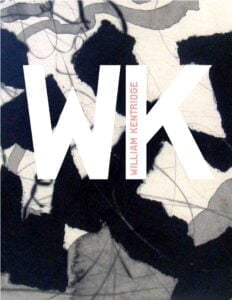
“It’s not a mistake to see a shape in the cloud. That’s what it is to be alive with your eyes open; to be constantly, promiscuously, putting things together”. – William Kentridge.

“It’s not a mistake to see a shape in the cloud. That’s what it is to be alive with your eyes open; to be constantly, promiscuously, putting things together”. – William Kentridge.
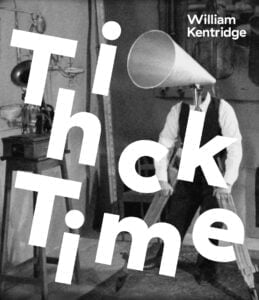
William Kentridge: Thick Time undertakes an overview of the artist’s recent works, focusing on a sequence of five key pieces dating from 2003 to 2015. These encompass three immersive audiovisual installations, including The Refusal of Time, selected works on paper, and ideas for theatre and opera design.
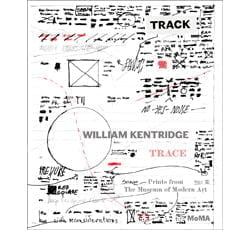
This visually compelling publication highlights The Museum of Modern Art’s unparalleled collection of prints and books by William Kentridge – nearly fifty works spanning the past three decades. The book also features a succession of artistic interventions made by Kentridge especially for the occasion. Kentridge’s practice brings together drawing, film animation, books, sculpture and performance.
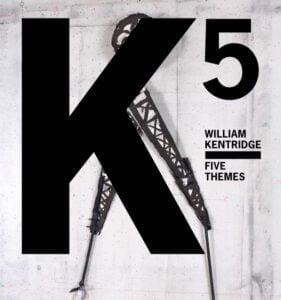
With a searing body of work ranging from films and drawings to prints, sculptures, and theatrical productions, William Kentridge has offered a fresh and distinctive perspective on the contemporary social landscape, with a particular emphasis on his native South Africa.
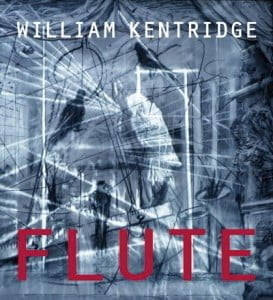
In 2005, William Kentridge’s production of The Magic Flute premiered at La Monnaie in Brussels. It went on to venues in France, Italy, Israel and the United States to critical acclaim. In September 2007 it opened in Cape Town and Johannesburg.
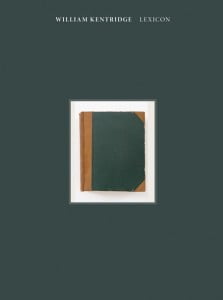
Lexicon is a facsimile cloth edition of an antiquarian Latin-Greek dictionary which William Kentridge has embellished with black ink drawings of what might seem at first to be animal silhouettes.
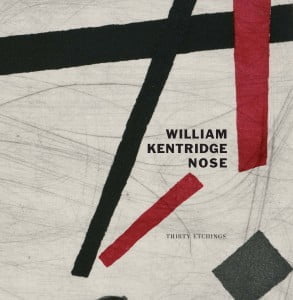
David Krut Publishing is delighted to announce the publication of William Kentridge Nose. This book accompanies the launch of a suite of thirty new limited-edition prints by Kentridge called ‘Nose’, the culmination of a four-year collaboration between the artist and David Krut Print Workshop.
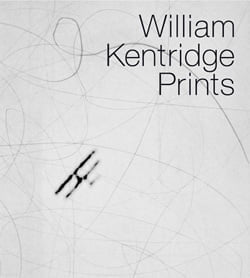
William Kentridge is well known for his films, drawings, and theatre productions, but he began his artistic career learning etching at the Johannesburg Art Foundation under Bill Ainslie. He spent two years teaching printmaking at the Foundation and his earliest exhibitions featured his monotypes and etchings such as the Domestic Scenes series.

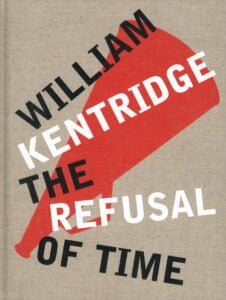
The Refusal of Time combines music, readings, dance, chants, videos, drawings and performance and brings Kentridge’s questioning of the notion of time to the stage. Echoing this theatrical performance that is constantly evolving, the book is a mise en abyme: it presents highlights from the show, drawings that were especially produced by the artist for the book, many sketches and study notebooks, all of the texts read during the performance, as well as interviews with Peter Galison and images from the workshop.
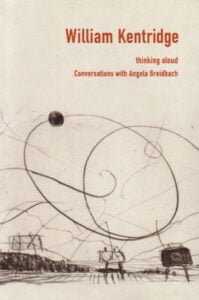
Thinking aloud is a conversation between William Kentridge and German critic Angela Breidbach. Prompted by Breidbach’s questions, Kentridge discusses his philosophy of image making.

Thinking aloud is a conversation between William Kentridge and German critic Angela Breidbach. Prompted by Breidbach’s questions, Kentridge discusses his philosophy of image making.
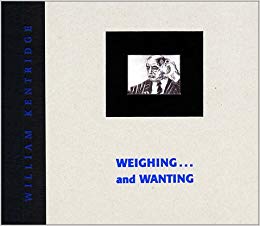
William Kentridge’s WEIGHING and WANTING focuses in detail on the artist’s 1998 film of the same name and the drawings he used to make the film. Over 80 film stills punctuate the catalogue, enabling the reader to follow the film sequence. An insightful essay on the drawings and film, and biographic information about the artist…
No products in the basket.